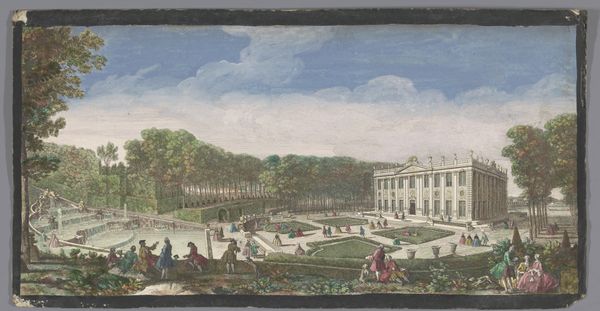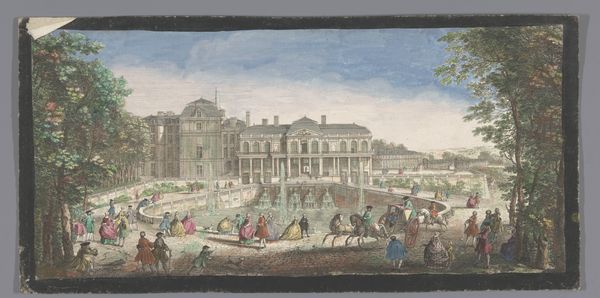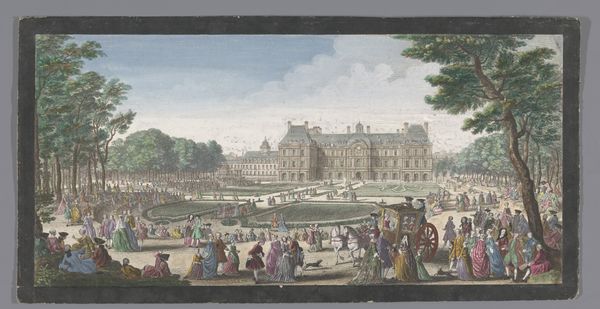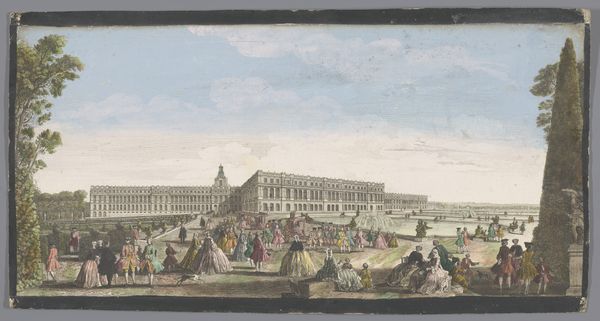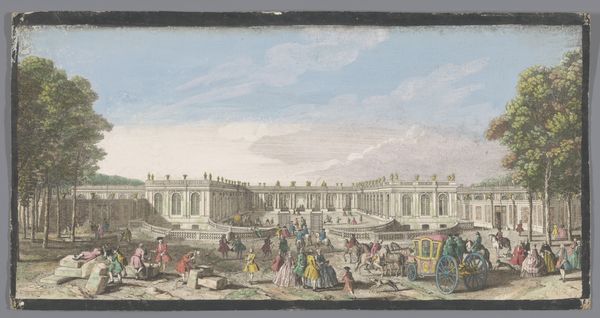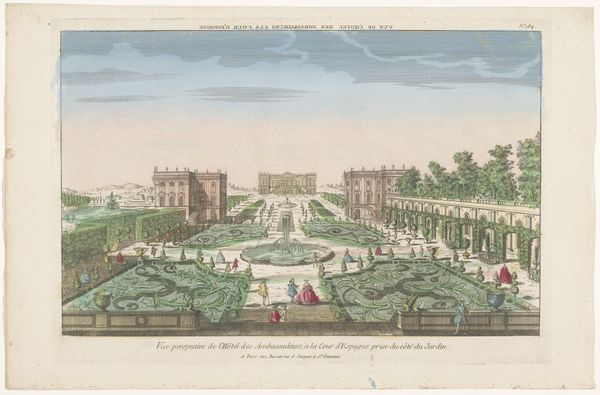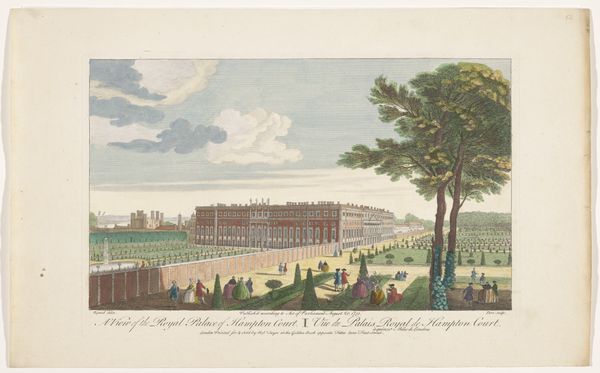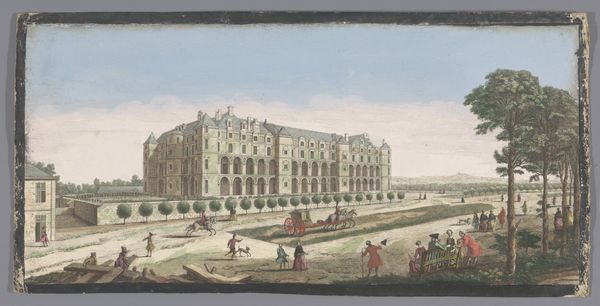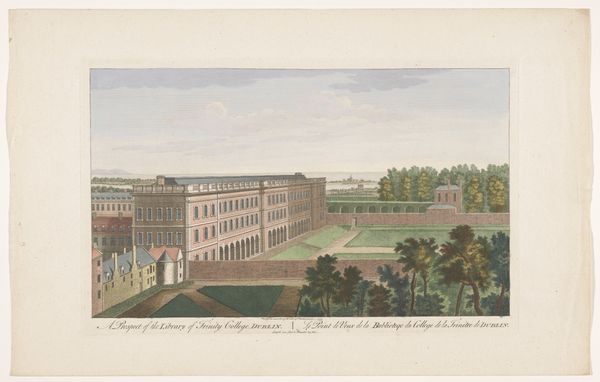
Gezicht op Hampton Court Palace te Londen gezien vanaf de oostzijde Possibly 1744
0:00
0:00
drawing, watercolor
#
drawing
#
landscape
#
perspective
#
watercolor
#
coloured pencil
#
cityscape
#
watercolor
#
rococo
Dimensions: height 328 mm, width 499 mm
Copyright: Rijks Museum: Open Domain
John Tinney created this print of Hampton Court Palace in London, likely in the mid-18th century, using etching and possibly some hand-coloring. The composition is neatly divided between the architecture of power on the right and the sculpted artifice of a garden to the left. Think about what such manicured landscapes meant during the Enlightenment. Spaces like these were designed to reflect human dominion over nature, a concept entwined with class and social hierarchy. Notice how the figures strolling, dressed in their finery, are almost as stylized as the landscape itself. Their leisurely presence underscores a life of privilege dependent on labor obscured from view. Even the gardener is framed to the side, emphasizing a social structure built on disparities. The emotional impact of this image lies in its ordered beauty, but perhaps also in its subtle revelation of the social contracts of the time. It's a world of manicured appearances, where even nature is shaped to reflect a rigid social order.
Comments
No comments
Be the first to comment and join the conversation on the ultimate creative platform.
